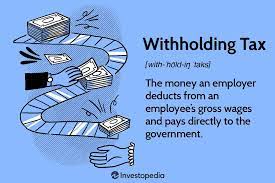Tax credits are often hailed as one of the most potent tools in the realm of taxation. However, their complexity can be daunting for many. In this comprehensive guide, we aim to unravel the mysteries surrounding tax credits and provide you with a clear understanding of how they work and how to leverage them to your advantage.
What Are Tax Credits?
Tax credits are financial incentives offered by governments to encourage specific activities, investments, or behaviors. Unlike tax deductions that reduce your taxable income, tax credits directly reduce the amount of taxes you owe. In essence, they can lower your tax bill dollar for dollar.
Types of Tax Credits
Tax credits come in various forms, tailored to promote different aspects of the economy and individual well-being. Here are some common types of tax credits:
1. Earned Income Tax Credit (EITC)
The Earned Income Tax Credit primarily benefits low to moderate-income individuals and families. It’s based on your earned income and the number of qualifying dependents. If you qualify, the EITC can lead to a substantial tax refund, making it an invaluable resource for those in need.
2. Child Tax Credit (CTC)
Designed to assist families with dependent children, the Child Tax Credit provides tax relief to parents. Eligible families can claim a credit for each qualifying child, significantly reducing their overall tax burden. Recent changes in legislation have made this credit even more generous.
3. Renewable Energy Tax Credits
For those interested in sustainable energy solutions, federal and state governments offer tax credits to promote the use of renewable energy sources such as solar panels and wind turbines. These credits make it more affordable for individuals and businesses to invest in eco-friendly technologies.
4. Research and Development Tax Credits
Businesses involved in research and development activities can take advantage of tax credits that encourage innovation and technological advancement. These credits offset a portion of R&D expenses, making it easier for companies to invest in research.
The Benefits of Tax Credits
The power of tax credits lies in the benefits they offer to individuals and businesses:
1. Reducing Tax Liability
One of the most significant advantages of tax credits is their ability to lower your tax bill directly. This means that for every dollar of tax credit you qualify for, your tax liability is reduced by the same amount.
2. Encouraging Desired Behavior
Governments use tax credits as a tool to encourage specific behaviors or investments they consider vital. These can include raising children, pursuing higher education, adopting green energy solutions, and more.
3. Economic Stimulus
During economic downturns or crises, governments may introduce tax credits to stimulate economic activity. These credits provide a financial boost to individuals and businesses, helping to spur economic growth.
Eligibility Criteria
While tax credits offer numerous advantages, they typically come with eligibility criteria. These criteria may involve income limits and specific qualifications, and they vary depending on the type of credit.
1. Income Limits
Many tax credits, such as the EITC and CTC, have income limits to ensure that the credits reach those who need them most.
2. Dependent Qualifications
For credits related to dependents, such as the Child Tax Credit, specific qualifications must be met to claim the credit.
How to Claim Tax Credits
Claiming tax credits involves following certain guidelines:
1. Filing Status
Your filing status can impact your eligibility for certain tax credits. Be sure to select the status that aligns with your situation.
2. Required Documentation
Proper documentation is essential when claiming tax credits. Keep records of your income, expenses, and any other relevant information to support your claim.
Common Mistakes to Avoid
When it comes to tax credits, there are common errors that taxpayers often make. To maximize the benefits, it’s essential to be aware of these mistakes and avoid them.
Maximizing Your Tax Credits
To make the most of your tax credits, consider tax planning strategies. Timing your expenses to align with the tax year and taking advantage of all available credits can help you maximize your savings.
State Tax Credits
In addition to federal tax credits, many states offer their own tax credits, further reducing your tax liability. It’s worth exploring what’s available in your state.
Recent Tax Credit Changes
Stay informed about recent tax credit changes, as they can significantly impact your tax situation. For example, recent legislation has expanded the Child Tax Credit, providing more substantial assistance to eligible families.
Tax Credit Write-Offs
Tax credit write-offs can be a significant financial benefit, allowing you to reduce your tax liability dollar for dollar.
Tips for Tax Planning
Effective tax planning can help you make the most of available tax credits. Consider consulting a tax professional to ensure you’re taking full advantage of these opportunities.
Case Study: Real-Life Example
Explore a real-life example of how tax credits can benefit an individual or business, providing a practical understanding of their impact.
Pros and Cons of Tax Credits
While tax credits offer numerous advantages, it’s essential to consider both their pros and cons to make informed financial decisions.
In conclusion, understanding the power of tax credits is vital for anyone looking to maximize their savings and make the most of the incentives offered by governments. By comprehending the various types of tax credits, their eligibility criteria, and how to claim them, you can harness the power of tax credits to keep more of your hard-earned money.
